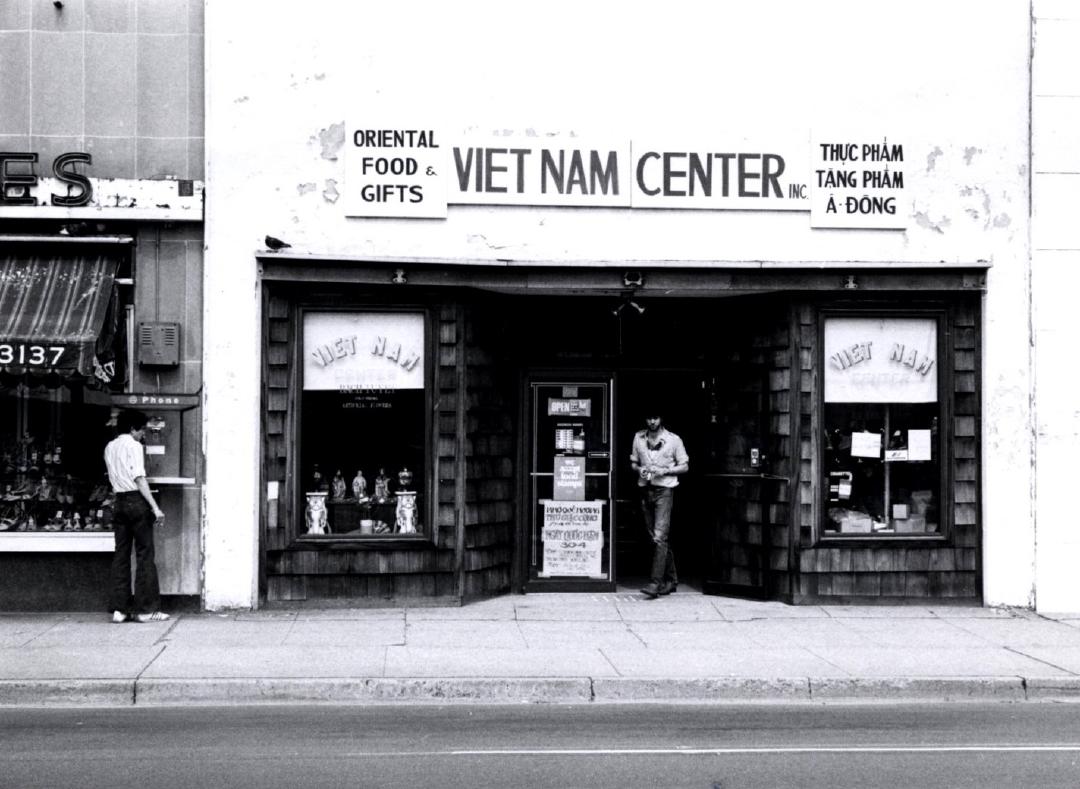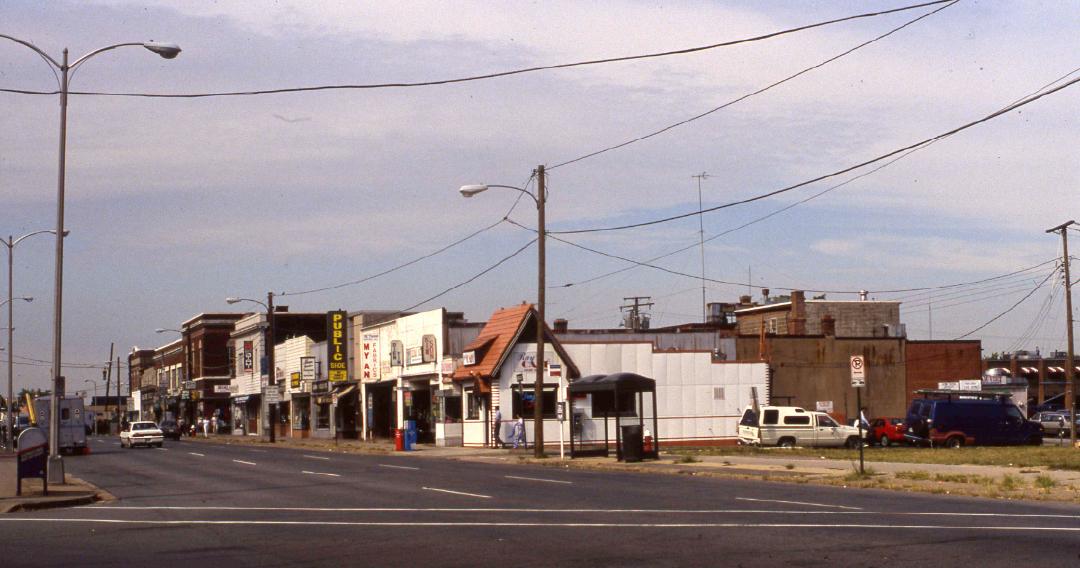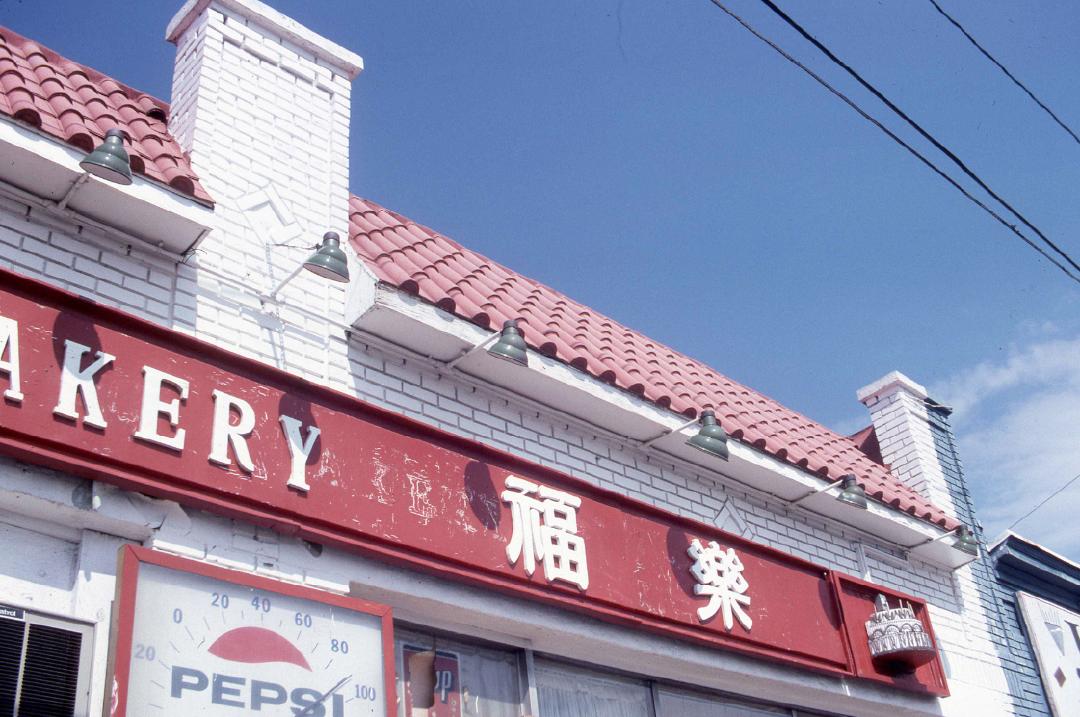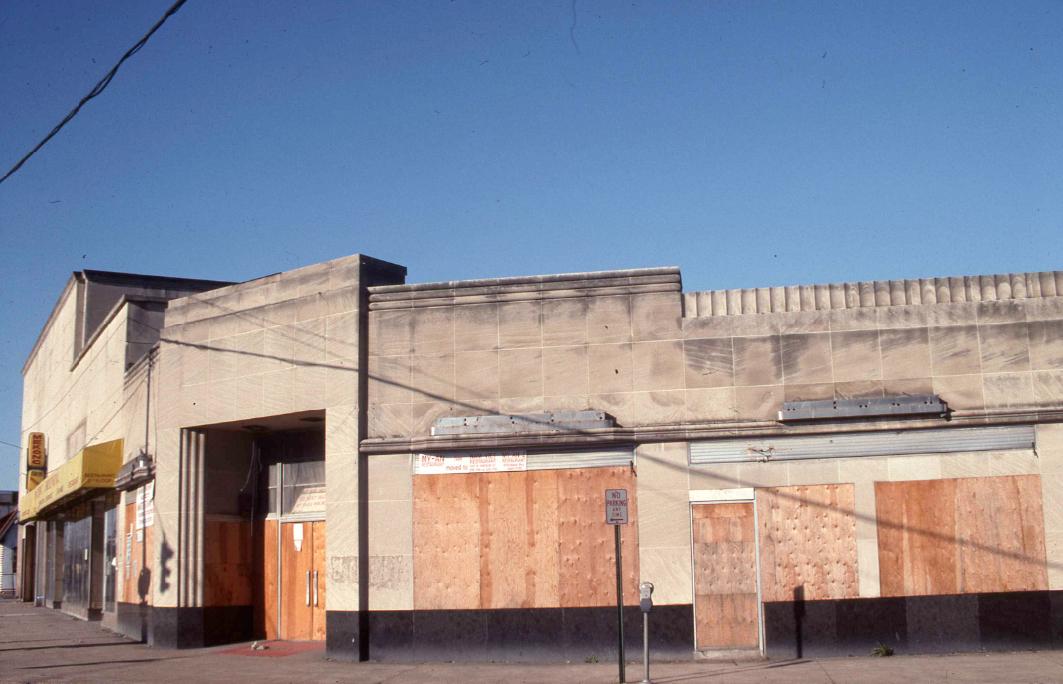Little Saigon in Clarendon

The first Vietnamese business, the Saigon Market grocery store, was established in 1972 by a former employee of the Vietnamese Embassy.
The following story is adapted from "The Echoes of Little Saigon Story Map"
Toward the end of the Vietnam War in the 1970s, immigration from Vietnam to the United States increased considerably. Before 1975, only about 15,000 Vietnamese immigrants lived in the United States. By 1980, about 245,000 Vietnamese lived in the U.S., with about 91 percent of that population arriving in the previous five years.
The Washington, D.C. metropolitan area was a desirable place to settle for several reasons. Many of the first-wave Vietnamese immigrants had ties to the U.S. government or the Embassy. Moreover, for many, residing near the capital city was reminiscent of their previous residence near the Vietnamese capital city of Saigon. Embassy officials pointed refugees toward Northern Virginia, and Arlington offered the availability of sponsors such as the Catholic Church and relatively affordable housing.
Until the mid-1900s, Clarendon was Arlington County’s premier downtown shopping area and a bustling streetcar suburb). However, during the 1960s and 70s, competition from regional shopping malls and strip shopping centers caused downtown Clarendon to decline. Many businesses relocated, leaving behind vacant storefronts.
The first Vietnamese business, the Saigon Market grocery store, was established in 1972 by a former employee of the Vietnamese Embassy, and a second grocery store, Vietnam Center, was opened by the Vietnamese wife of a CIA employee. Soon, more Vietnamese people began to open shops and restaurants in Clarendon, and the area was transformed into the hub of the East Coast Vietnamese community.
Shops opened to sell specialized goods to the Vietnamese community. Major attractions included the Vietnamese grocery stores, which sold ingredients unavailable in American markets, like fish sauce, rice paper, quail eggs, pomelo peel, star anise, canned oyster mushrooms, and egg roll wrappers, as well as delicacies like dried shark fin. A popular drink served in the cafes was iced coffee made with sweetened condensed milk and crushed ice. Jewelry, fabric, and department stores soon opened to sell goods popular with Vietnamese shoppers.
Little Saigon served as a social setting for interacting with other community members, with entertainment like live Vietnamese music performed in cafes. People would frequently visit Little Saigon for cuisine such as phở, a traditional Vietnamese soup, or spring rolls, which couldn’t be found elsewhere at the time.
Little Saigon offered a variety of business types and styles. The My An Fabric store had multiple businesses within the same building, including a billiards and arcade game room and a small café. Cafe Dalat served only as a restaurant with high ceilings, a dark interior with little decor, and symmetrically lined tables, which allowed the waitstaff to serve customers within just minutes of ordering. Some residents recall the over-sized suitcases on display, often pouring out onto the sidewalk, at the Pacific Department Store.
Vietnamese entrepreneurs faced many hurdles as they tried to succeed in Clarendon. Because many banks wouldn’t lend to them, Vietnamese entrepreneurs had to borrow money from friends and family to start their businesses, often at a higher interest rate than commercially available. Others relied on traditional Vietnamese practices known as “hoi,” informal lending clubs set up by local entrepreneurs.
Several accounts of Little Saigon from 1975-85 included terms like “run down” and “dirty.” Many building owners did not spend money maintaining or updating their buildings because they were waiting for the Metro station to open and for new economic opportunities to be realized as Clarendon redeveloped. On November 18, 1989, the Arlington County Board unanimously endorsed Clarendon’s redevelopment plan, which envisioned high-rise commercial structures, mid-rise residential buildings, parks, and pedestrian walkways.
Eventually, rents increased in Clarendon (up to $25-30 a square foot in some commercial buildings), and Vietnamese enterprises were displaced from Arlington. The Vietnamese population that had settled in the garden apartments of Arlington moved westward, with many settling around Seven Corners and Falls Church near the intersection of Graham Road and Arlington Boulevard. Gradually, the number of Vietnamese businesses in Little Saigon diminished. Some business owners moved on to other opportunities, some relocated, and some, like the more successful restaurants like Queen Bee and Nam Viet that appealed to mainstream customers, remained.
In 1984, the Eden Center shopping center in the Seven Corners area of the City of Falls Church opened, bringing 20,000 square feet of affordable retail space. In the following years, many Little Saigon businesses relocated to Eden Center, which initially had a mix of Latino-, Asian-, and American-owned businesses. Some business owners opened establishments with their storefronts, while others rented a stall in the former Grand Union building.
In 1997, 32,400 square feet were added to the Eden Shopping Center, along with an iconic clock tower; it was the largest Vietnamese shopping district in the U.S. The Eden Center became a hub of Vietnamese commerce and activity. The Eden Center is now regarded as the central place for Vietnamese services and goods in Northern Virginia and the entire East Coast. In 2014, the Eden Center was home to 120 stores and restaurants, almost all Vietnamese.
Images






